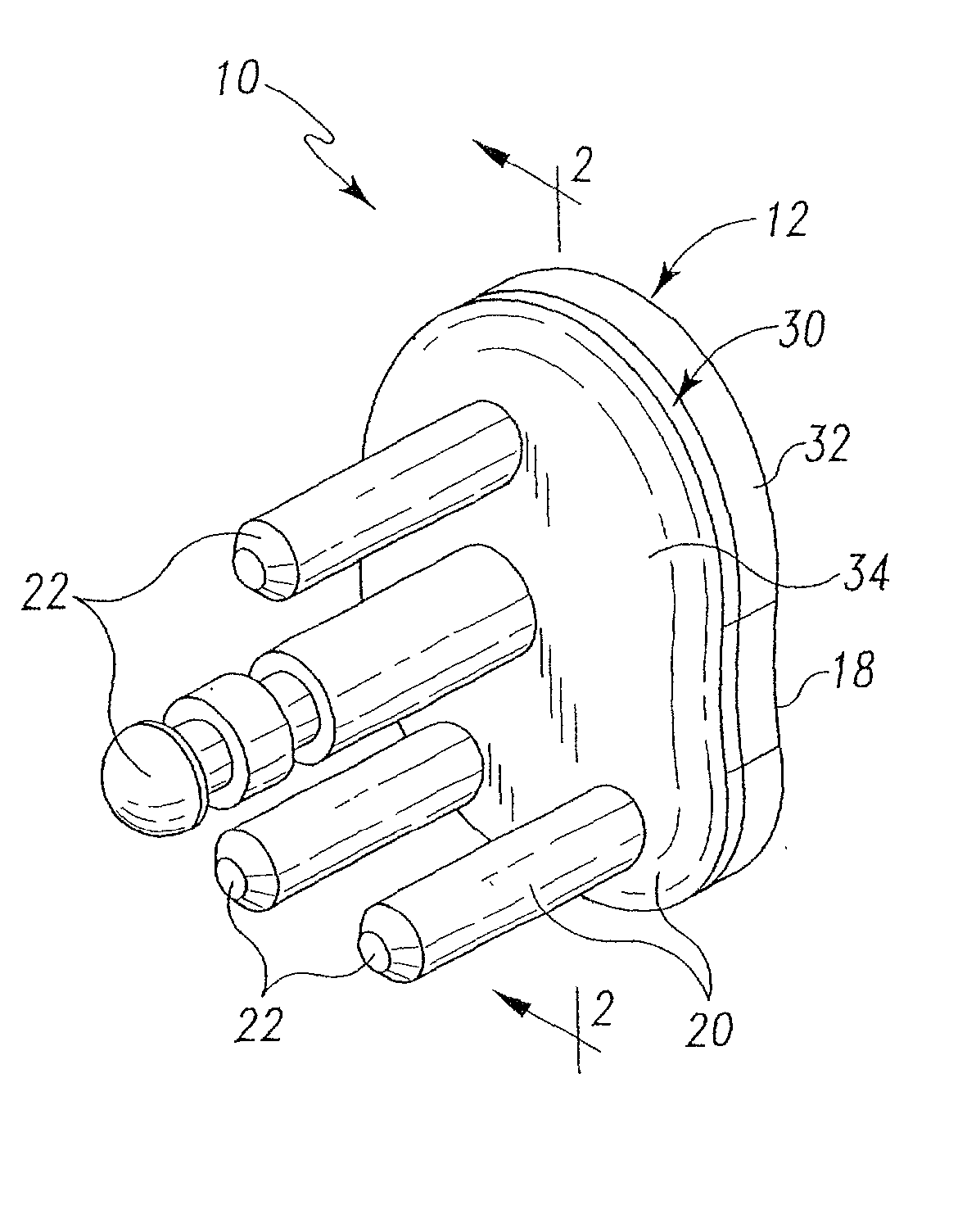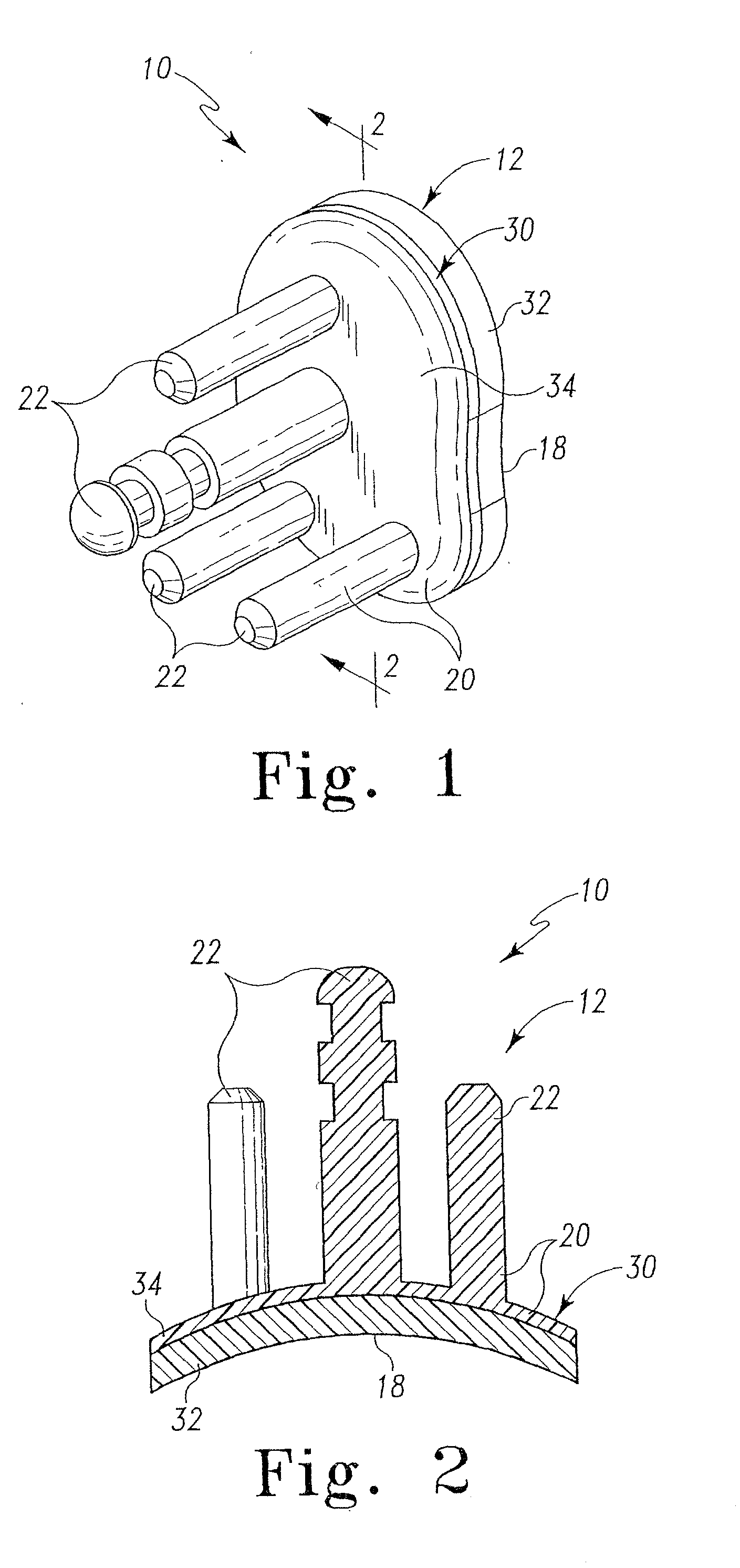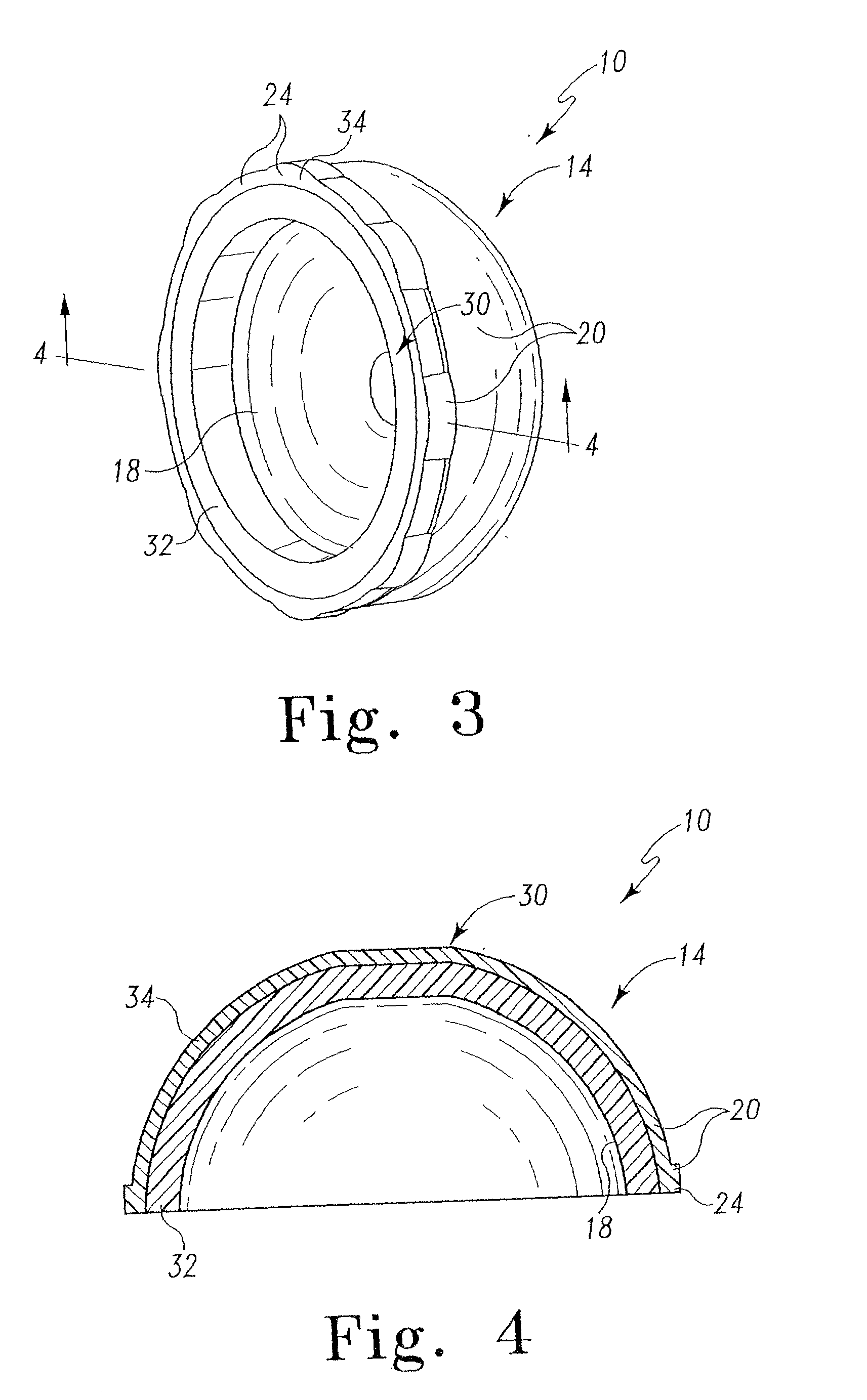Composite prosthetic bearing having a crosslinked articulating surface and method for making the same
a polyethylene and composite technology, applied in the field of composite prosthetic bearings, can solve the problems of non-homogeneity, non-compliance, and difficulty in affixing to the bone of polyethylene-composite prosthetic bearings, and achieve the effects of high ductility and enhanced wear and oxidation resistan
- Summary
- Abstract
- Description
- Claims
- Application Information
AI Technical Summary
Benefits of technology
Problems solved by technology
Method used
Image
Examples
Embodiment Construction
[0021] While the invention is susceptible to various modifications and alternative forms, specific embodiments thereof have been shown by way of example in the drawings and will herein be described in detail. It should be understood, however, that there is no intent to limit the invention to the particular forms disclosed, but on the contrary, the intention is to cover all modifications, equivalents, and alternatives falling within the spirit and scope of the invention as defined by the appended claims.
[0022] The present invention relates to implantable prosthetic bearings and methods of making the same. What is meant herein by the term "bearing" is an orthopaedic implant prosthetic bearing of any type, condition, shape, or configuration. Such bearings may be utilized in a number of joint replacement or repair procedures such as surgical procedures associated with the hip, shoulders, knees, ankles, knuckles, or any other joint. Referring now to FIGS. 1-6, there is shown a number of ...
PUM
| Property | Measurement | Unit |
|---|---|---|
| Fraction | aaaaa | aaaaa |
| Fraction | aaaaa | aaaaa |
| Fraction | aaaaa | aaaaa |
Abstract
Description
Claims
Application Information
 Login to View More
Login to View More - R&D
- Intellectual Property
- Life Sciences
- Materials
- Tech Scout
- Unparalleled Data Quality
- Higher Quality Content
- 60% Fewer Hallucinations
Browse by: Latest US Patents, China's latest patents, Technical Efficacy Thesaurus, Application Domain, Technology Topic, Popular Technical Reports.
© 2025 PatSnap. All rights reserved.Legal|Privacy policy|Modern Slavery Act Transparency Statement|Sitemap|About US| Contact US: help@patsnap.com



